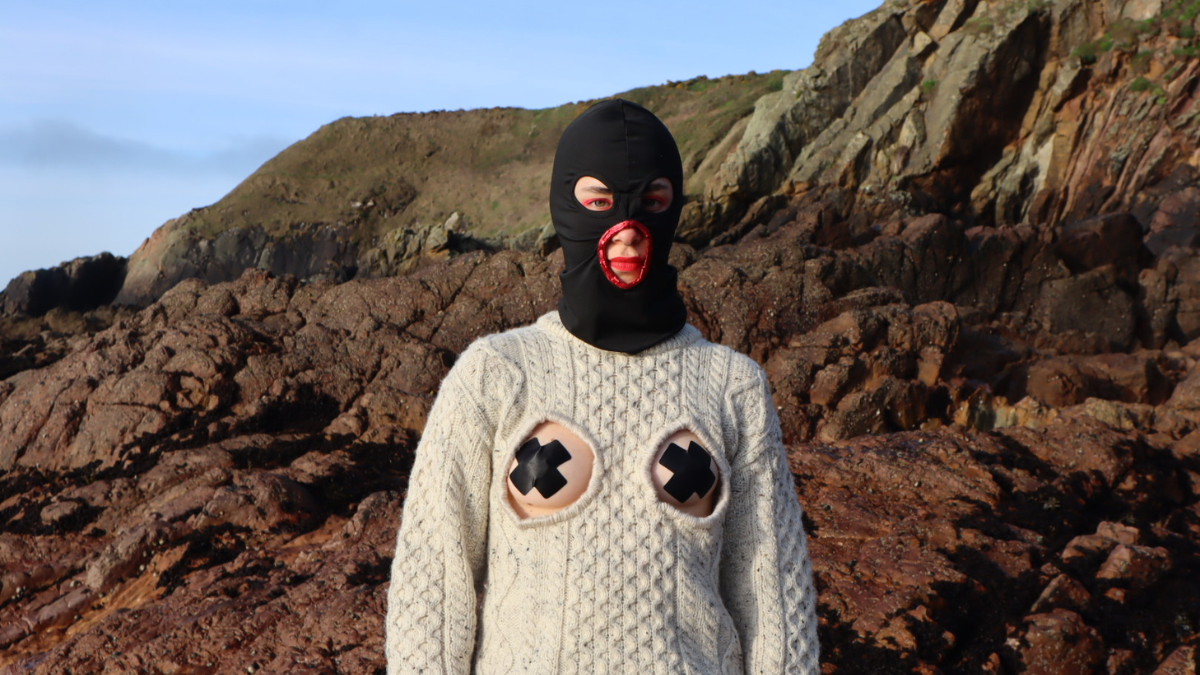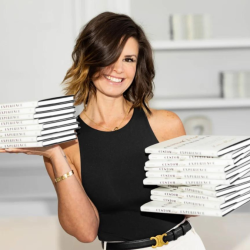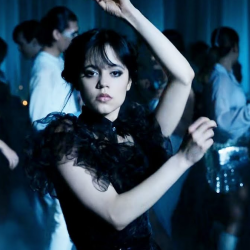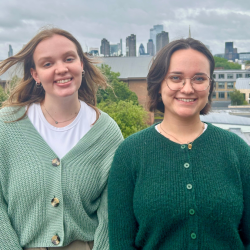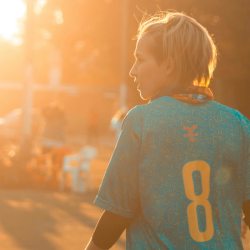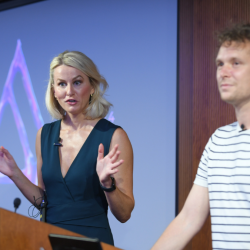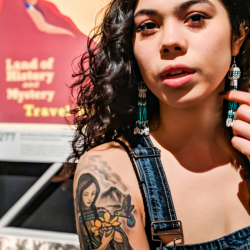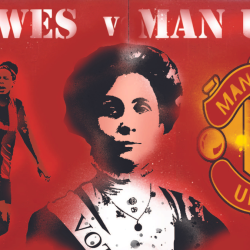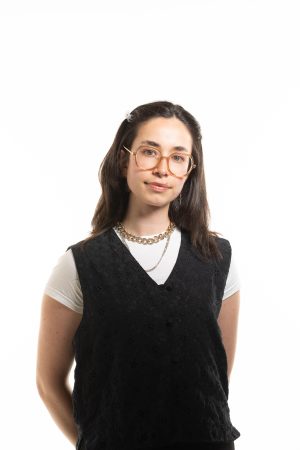
This year, we had the opportunity to explore — through a private guided tour and thanks to the MullenLowe NOVA Awards that celebrates fresh creative talent — the Central Saint Martins annual degree shows.
Among tons of absolutely brilliant designs, Fliuch [fluh-chk] really caught our attention. Translating to ‘wet’, this is Ellen Cahill’s powerful and provocative graduation project based in the Irish language — Gaeilge — and female sexuality. Merging technologies of fine art and design, it pioneers the intimate autobiographical storytelling of radical feminist artists, and the anti-patriarchal ideologies of queer and kink spaces, weaving these into the modern revival of Irish identity.
Ellen, can you tell us more about your background?
I’m from Ireland of course, and I spent most of my formative years there. Over the past 50 years, significant changes have taken place in the country, but the historical factors that shaped Ireland’s culture and values still leave an impact. And it was when I first moved out of Ireland to go to Amsterdam, where I pursued my undergraduate studies in Psychology, that I began to realize how conservative Ireland could still be. Especially through the friendship with young women from diverse European backgrounds who spoke openly about sex, sexuality, relationships, …
Psychology was a subject I truly enjoyed, particularly for its human-centric aspect. Yet, I couldn’t help but notice that psychology often focused heavily on analysing problems without necessarily offering concrete solutions or progress beyond the problem itself. That’s what led me to design. I was drawn to the idea that design is about solving problems as well as analysing them. I applied to a few design master’s programs and CSM, luckily, was one of the ones that accepted me. Throughout my studies there, I developed a growing interest in critical design as opposed to traditional product or industrial design. Critical design focuses on social commentary and generating discussions. It challenges societal issues rather than aiming solely to bring a physical product into existence. I think a lot of people tend to romanticize design, believing it merely exists to solve problems and contribute to the greater social good. But the reality is that design operates within the realms of business and capitalism. Profit-making is a significant factor, and numerous products, which may not necessarily be essential or environmentally friendly, are produced.
As my project progressed, I found myself incorporating elements of both design and art. I believe that art possesses similar power to critical design in terms of providing commentary and criticizing the systems that surround us. The distinction between art and design lies in the desire for design to create meaningful interactions with people, fostering engagement and dialogue.

We can now talk about your project, ‘Fliuch’. How it merges art, design, and the Irish language? What inspired you to explore these intersections?
I started from the point of wanting to learn the Irish language. It’s unfortunate that many people who grow up in Ireland no longer learn Irish as their first language. While Irish is taught in schools, it exists in a somewhat peculiar and contested space. As we transition out of school, fluency diminishes over time. However, I have noticed a revival of interest in the Irish language among my generation. Historical and cultural factors, such as terrorism in Northern Ireland or the need for integration into the EU, may have led previous generations to distance themselves from Irish culture. Nowadays, young people are rekindling their interest in their own cultural heritage, a phenomenon not unique to Ireland but observed worldwide.
When I put it in a design context, the question that always comes up was, Why are you doing this? What’s the point? When examining the Irish language and its relationship with Irish identity, I delved into research that shed light on how historical factors contributed to the erasure of the language. I discovered that these same factors had also created an oppressive system for women in Ireland. British colonial rule, for example, introduced changes in laws that disadvantaged women. Also, when the Catholic Church established its presence in Ireland, it actively promoted the use of English and Latin and has been riddled with numerous issues. One prominent example is the existence of mother and baby homes where unmarried pregnant women were sent, resulting in significant controversy. These historical circumstances, coupled with a conservative government in the 20th century, contributed to restricting women’s roles to that of housewives. Married women were forced to quit their jobs, and contraception remained illegal until the 1980s. I knew that in my own revival of the language, I wanted to oppose these values that had oppressed women. Sexuality and sexual expression became significant focal points, as many of the challenges faced by Irish women related to the control of their bodies and sexuality.
As I said, during my time in Amsterdam, I became aware of how little these topics were openly discussed, particularly in terms of female sexuality and self-pleasure. It is what shaped the theme of my project. The concepts of queer and kink emerged as ways to explore these themes, considering the practices and communities are associated with sexual liberation. Linguistically, these terms held significance as they have a history of language transformation and reappropriation. The term ‘queer,’ for example, has evolved from being derogatory to becoming an empowering self-identifier. Deep-diving into these cultures provided inspiration, particularly in examining kink and fetish communities where sexuality can appear extreme. However, these communities actually promote a highly educational and inclusive approach to sex. Through their group gatherings, people learn from one another, with a strong emphasis on consent.
Both queer and kink communities reject the shame surrounding sexuality and instead celebrate it, standing in contrast to the prevalent issues faced by women in Ireland and various cultures where shame is often used as a tool to control women’s actions.


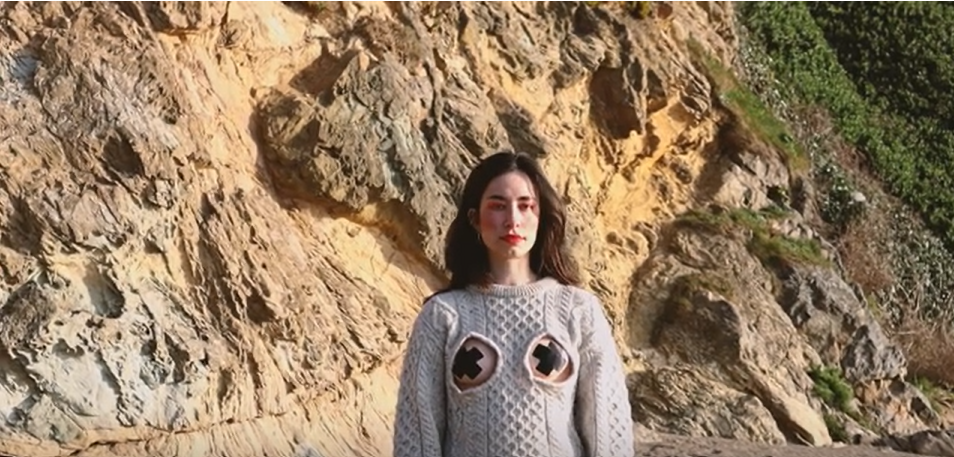
How did you develop your project and what drove your decision?
In developing my project, I drew inspiration from a workshop by Noam Toran at CSM, which explored the exploitation genre of films. These films, known for their kitschy and over-the-top nature, encompassed genres like horror and pornography. The workshop highlighted the value and craftsmanship found in these low-budget, DIY productions as a way to challenge hierarchies in art and design that prioritize polished and high-end finishes. It questioned the notion that only sleek and flawless media have artistic merit, presenting an alternative perspective.
I really loved the aesthetic and approach of these exploitation films, especially as someone coming from a non-industrial design background. For me, the primary focus is on conveying the message rather than obsessing over perfect finishes or minute details. While attention to detail is crucial in certain contexts, I felt that design sometimes places excessive emphasis on high-quality finishes at the expense of substance. The aesthetic of the exploitation genre resonated with me to challenge this paradigm.
As I delved deeper into queer and feminist art, exploring practices of sexual liberation, I discovered that these approaches were often seen as gendered issues. DIY crafts, decorative elements, makeup, and costumes — associated with femininity or the domestic realm — were undervalued in art and design spaces largely dominated by men. The low-brow, over-the-top aesthetic became a deliberate opposition to the polished and patriarchally valued aesthetics.
The choice of video as the medium was influenced by radical feminist artists who viewed it as a democratic practice. Anyone can pick up a camera and create a video, making it accessible and autobiographical in nature. It also allows for self-expression and personal storytelling. In my case, the video served as a subversion of traditional Irish values associated with the housewife archetype and the restrictive roles imposed on women. I aimed to corrupt and satirize these typologies using an exaggerated drag aesthetic.
The triptych format, featuring three screens, was a nod to religious symbolism and its historical influence on Ireland’s perception of sexuality. The two side videos featuring myself were inspired by a feminist approach to art, where the artist places themselves within the artwork. As my project was deeply personal and autobiographical, it felt important to include my own presence in the work. That also made it more vulnerable and authentic, even more scary. And I think that was important. And eventually, I’m pretty happy I did that as well.
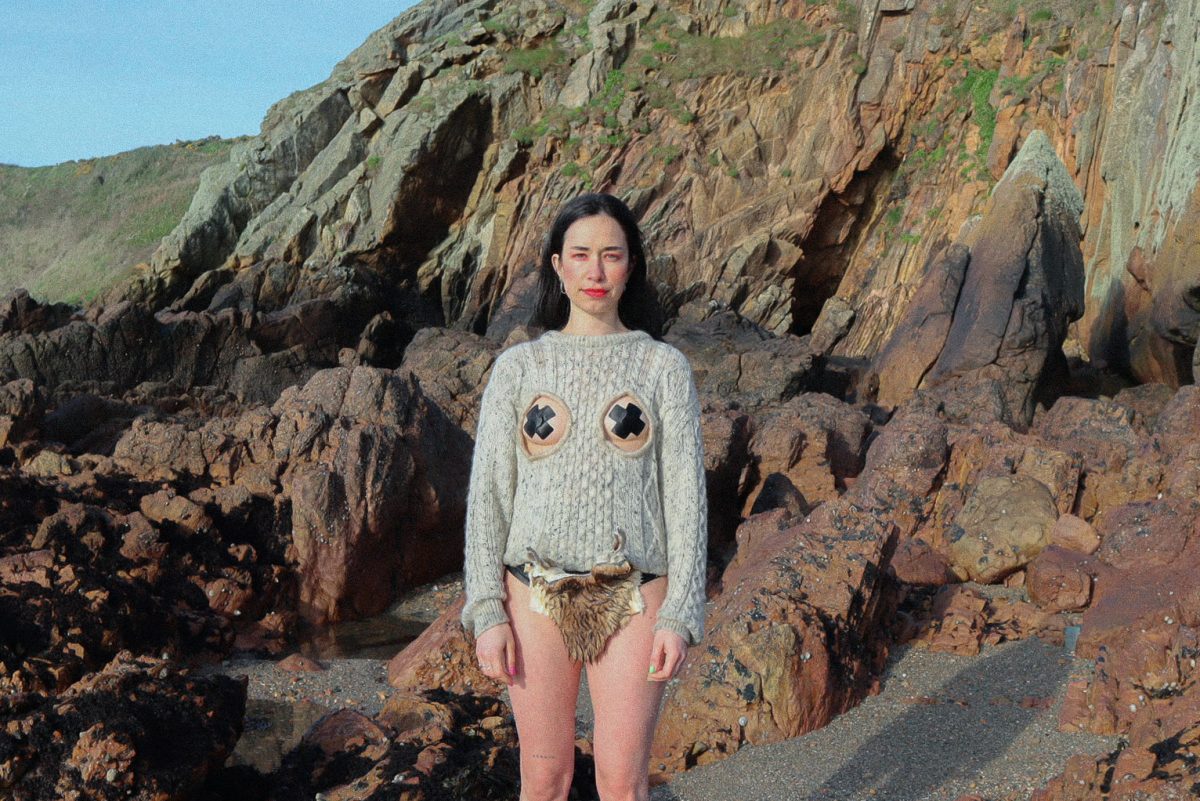
Your topic is impactful, provocative, and still often a tabu. It exposes you a lot. Have you ever been scared about being judged by people around you?
Yeah, definitely. Putting myself out there and talking about these issues could be a bit scary and confronting, especially in a design space. My teaching and my tutors are quite male-dominated, but immersing myself in these topics, conducting research, and learning has helped me overcome any initial discomfort. It has also shattered personal barriers and insecurities. Initially, I had some meetings with my tutors where I blushed while discussing subjects like masturbation. However, I soon realized that it shouldn’t matter, as it has led me to develop a more accepting attitude towards sex, sexuality, kinks, and fetishes. Fortunately, my family and friends have been totally supportive, although there were some small tension and awkwardness. For instance, I found myself explaining my projects to my mom, and discussing products like butt plugs and various types of vibrators. Also, during the exhibition, when my parents joined me to watch the video, my classmates were shocked that I was viewing it with them. It created a slightly uncomfortable and humorous situation, but overall, it initiated valuable discussions and increased my comfort level with everyone.
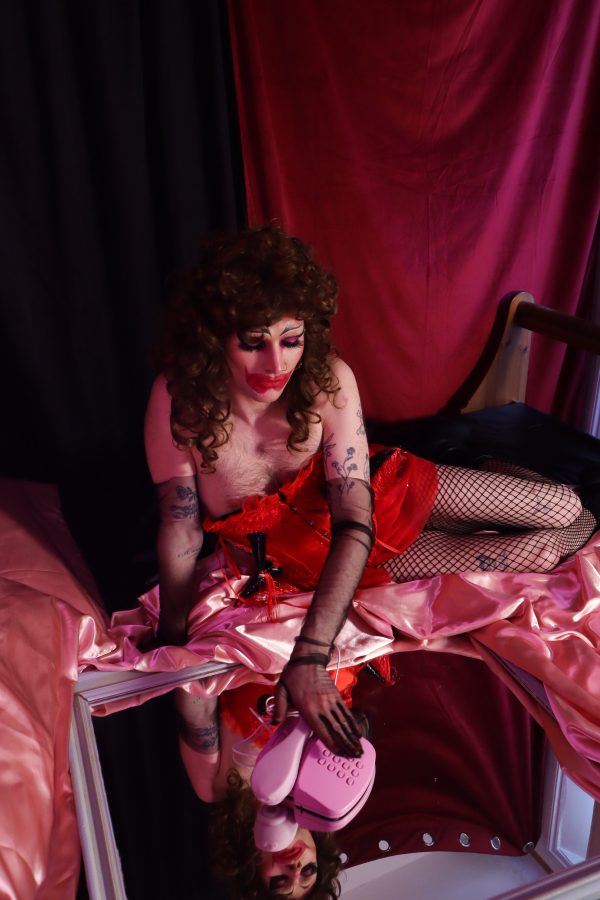
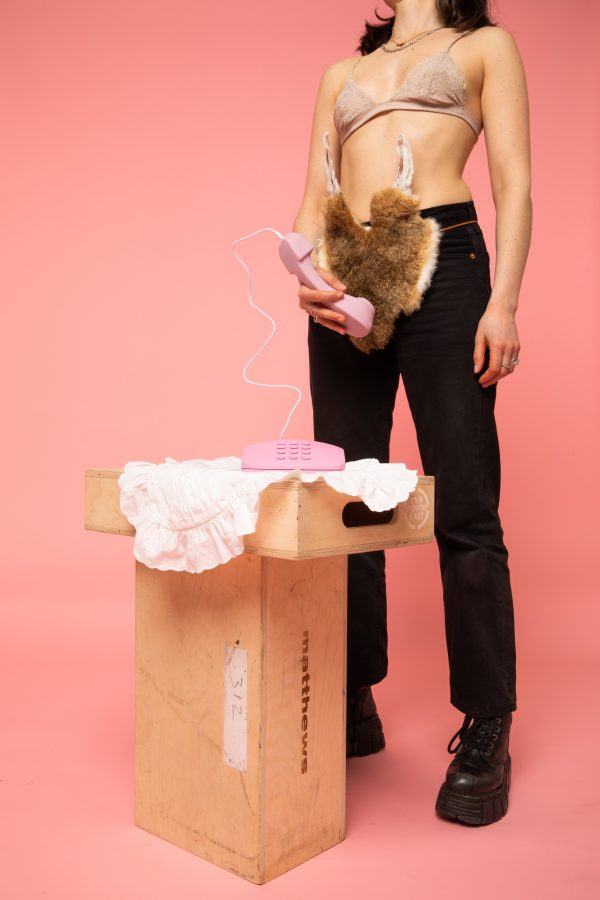
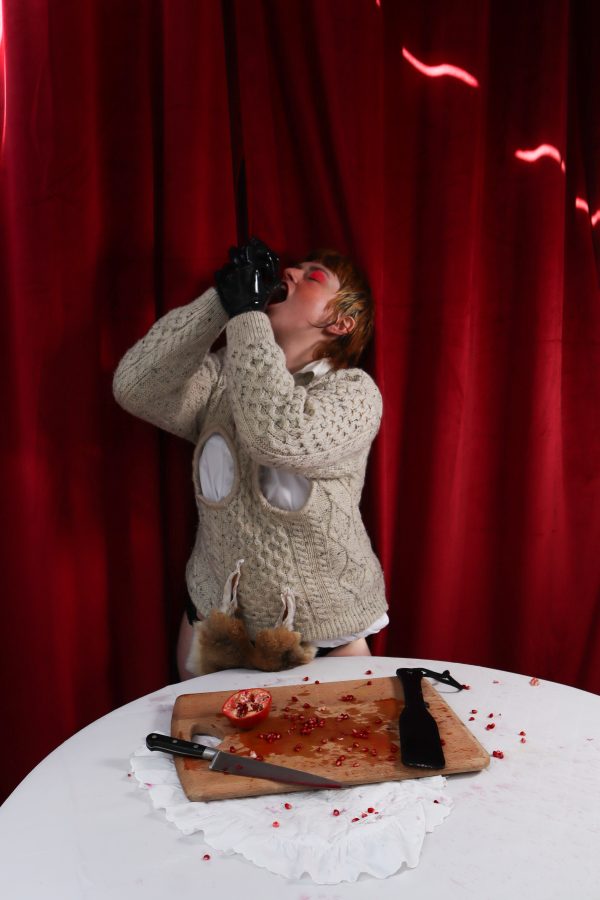
Naturally, given the nature of this project, I approached it from a radical feminist standpoint. It was intentionally provocative and unambiguous. There were specific people within my family or friend circle whom I knew wouldn’t be very receptive, and I understood that it couldn’t be forced upon them. Fortunately, there was no one I was overly concerned about. It has become a more casual topic for me.
You also produced a book as part of the project. What hidden aspects of the Irish language did you discover, and how do the worlds you created in the book complement the themes explored in ‘Fliuch’?
The book served as a linguistic grounding for the exploration of sex and sexuality in the Irish language. It aimed to uncover hidden aspects of the language and bring attention to words related to intimacy and sex that were sourced from various places, including an Irish poem magazine and scholarly collections.
One of the significant discoveries I made was the etymology and roots of words associated with female sex and sexuality. For example, the word ‘coinín’ in Irish means ‘rabbit’, but it is also used as slang for ‘vagina’ or ‘pussy’. This inspired the creation of rabbit underwear as a prop in my project. Another word, ‘brillín’, which means ‘clitoris’, has roots in the word ‘brille’, which means ‘vulgar gossip’. This influenced the design of a vibrator phone as a representation of the clitoris. These linguistic findings provided inspiration for the props I made and helped me develop the visual elements of the project.
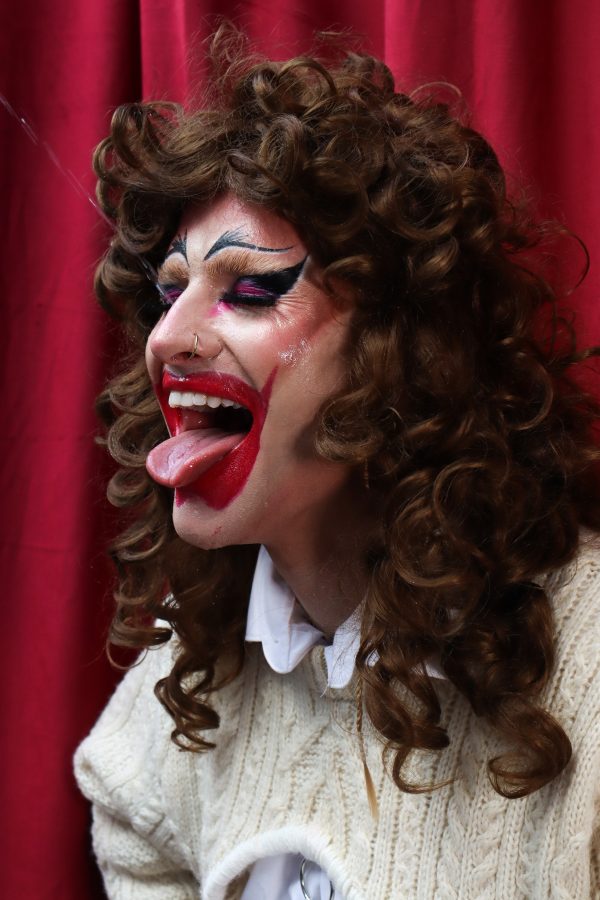
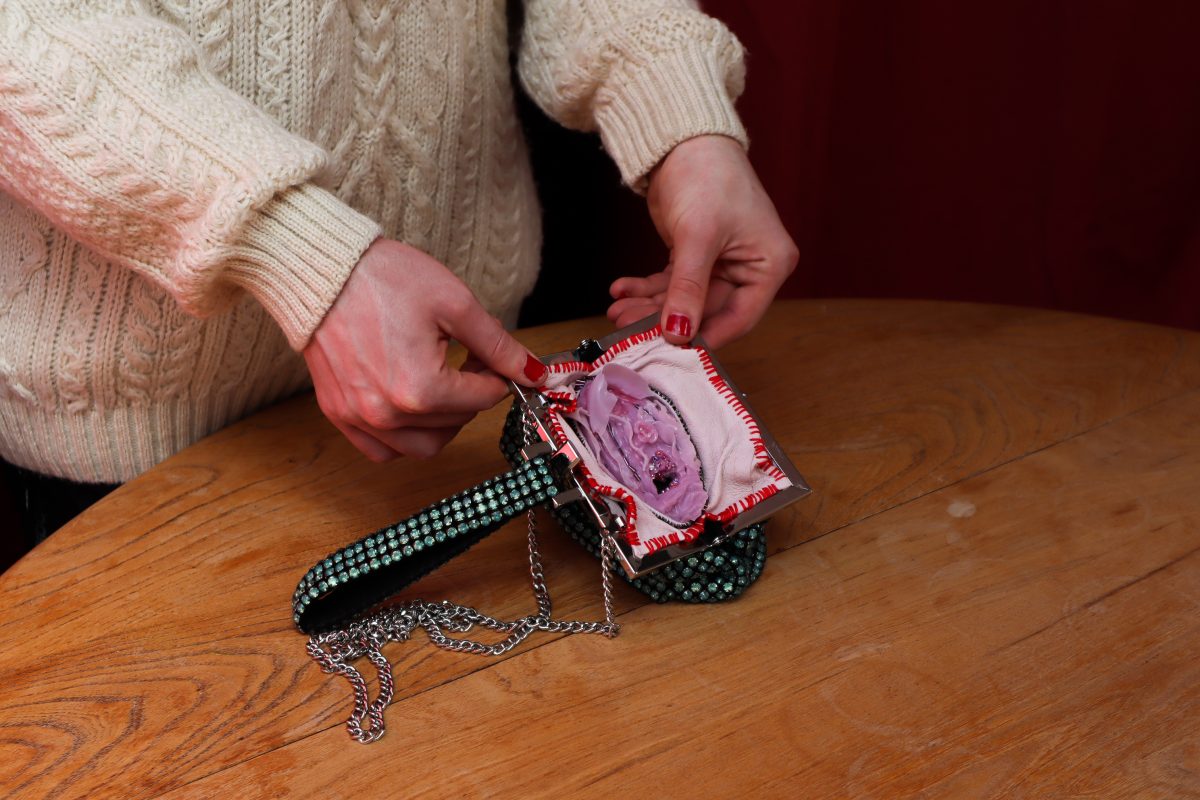
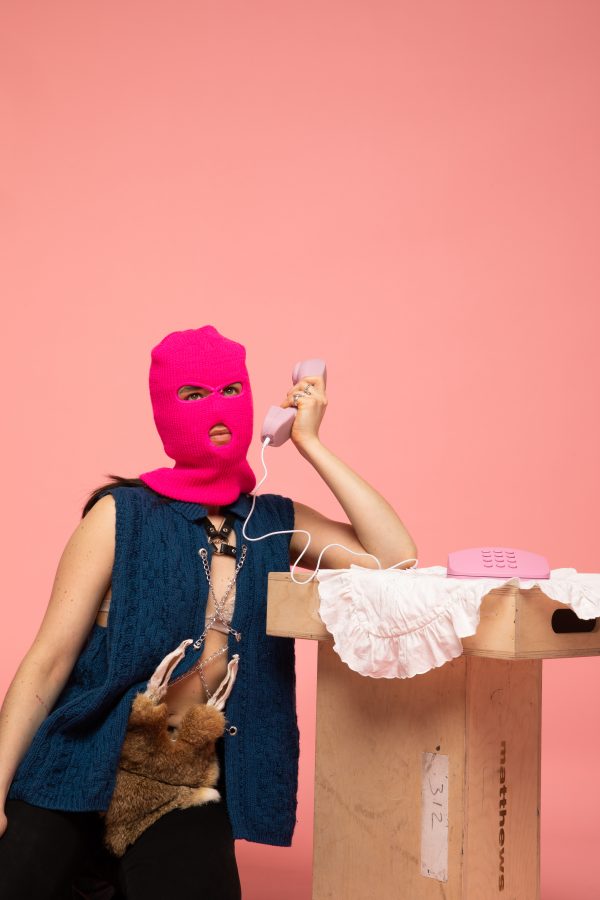
Creating the book also allowed for a physical manifestation of the project, aligning with the nature of the design. It provided a tangible output that showcased the collaboration and imagery involved. Throughout the project, I collaborated with friends who helped me film and took beautiful pictures during the process. Additionally, I worked with a drag queen and worked on a photo shoot, which added to the visual richness of the book. By highlighting the collaborative nature of the project, I aimed to challenge the notion of the solitary genius creator often associated with design. Collaboration became a significant aspect of my work, influenced by feminist art practices and the recognition that creative endeavors are rarely the product of a single individual’s ideas.
‘Fliuch’ embraces a purposefully subjective and subversive approach. What do you believe can be gained from engaging in personal and subjective storytelling? How does this approach foster greater engagement with your audience?
Firstly, it creates a sense of intimacy and invites the audience to connect with the narrative on a deeper level. Sharing personal experiences and perspectives allows for a more empathetic and emotional connection to be established. This can lead to a greater understanding and appreciation of the subject matter, as well as fostering a sense of shared humanity.
Secondly, adopting a subjective approach challenges the notion of objectivity in design. Design is fundamentally about people and their experiences, and attempting to solve problems solely through detached observation can overlook the complexity and nuances of human life. Embracing subjectivity acknowledges that designers are not all-knowing experts, but rather individuals with their own unique perspectives and lived experiences. It encourages a more humble and open-minded approach to understanding and addressing the needs of others.
In the context of ‘Fliuch,’ the purposefully subjective and subversive approach invites viewers to reflect on their own experiences of sexuality, challenge societal norms and expectations, and engage with the themes of sexual liberation and empowerment. It creates a space for dialogue and introspection, encouraging a more profound and personal engagement with the subject matter.
Featured image: Fliuch / Ellen Cahill

















